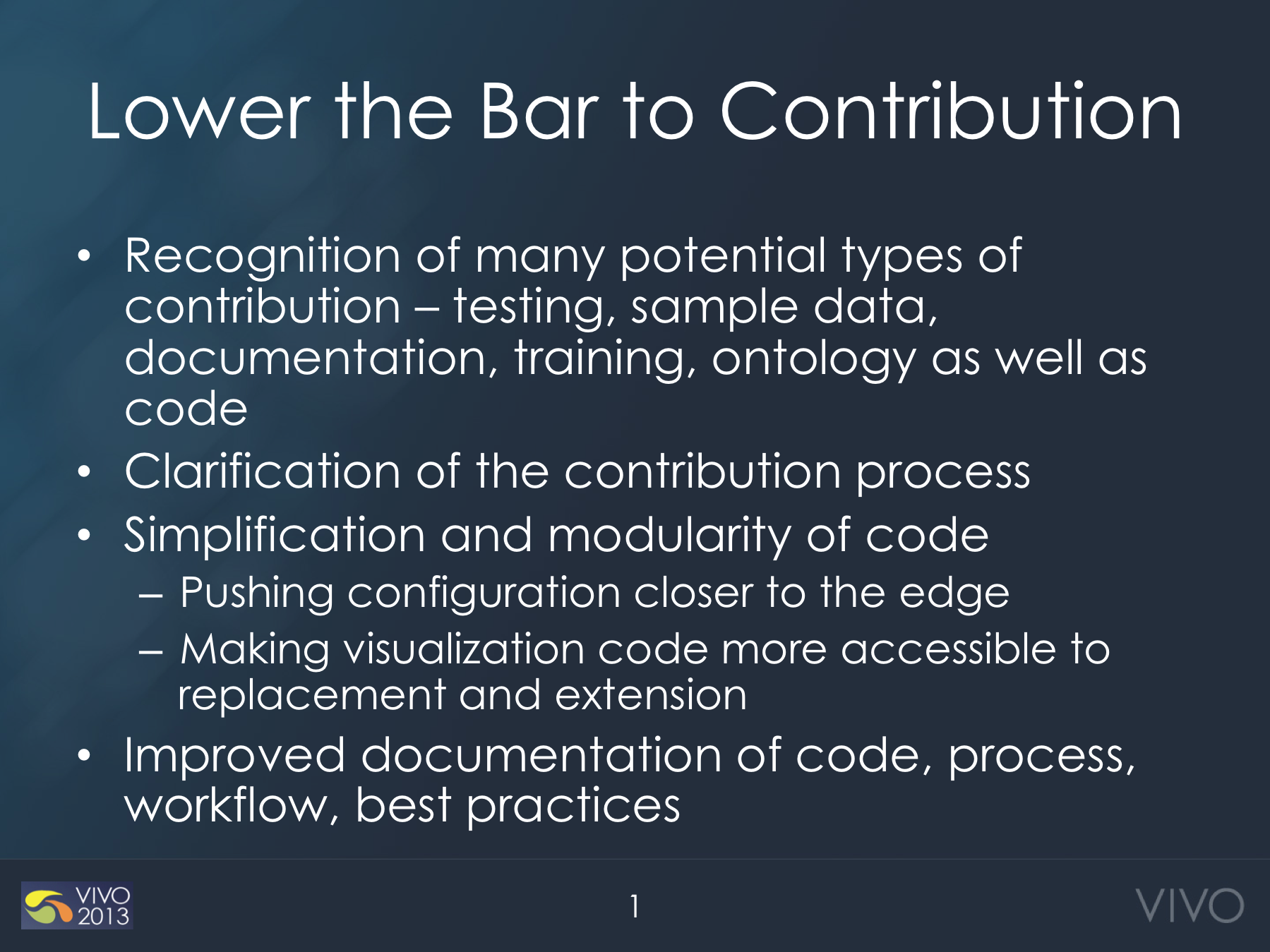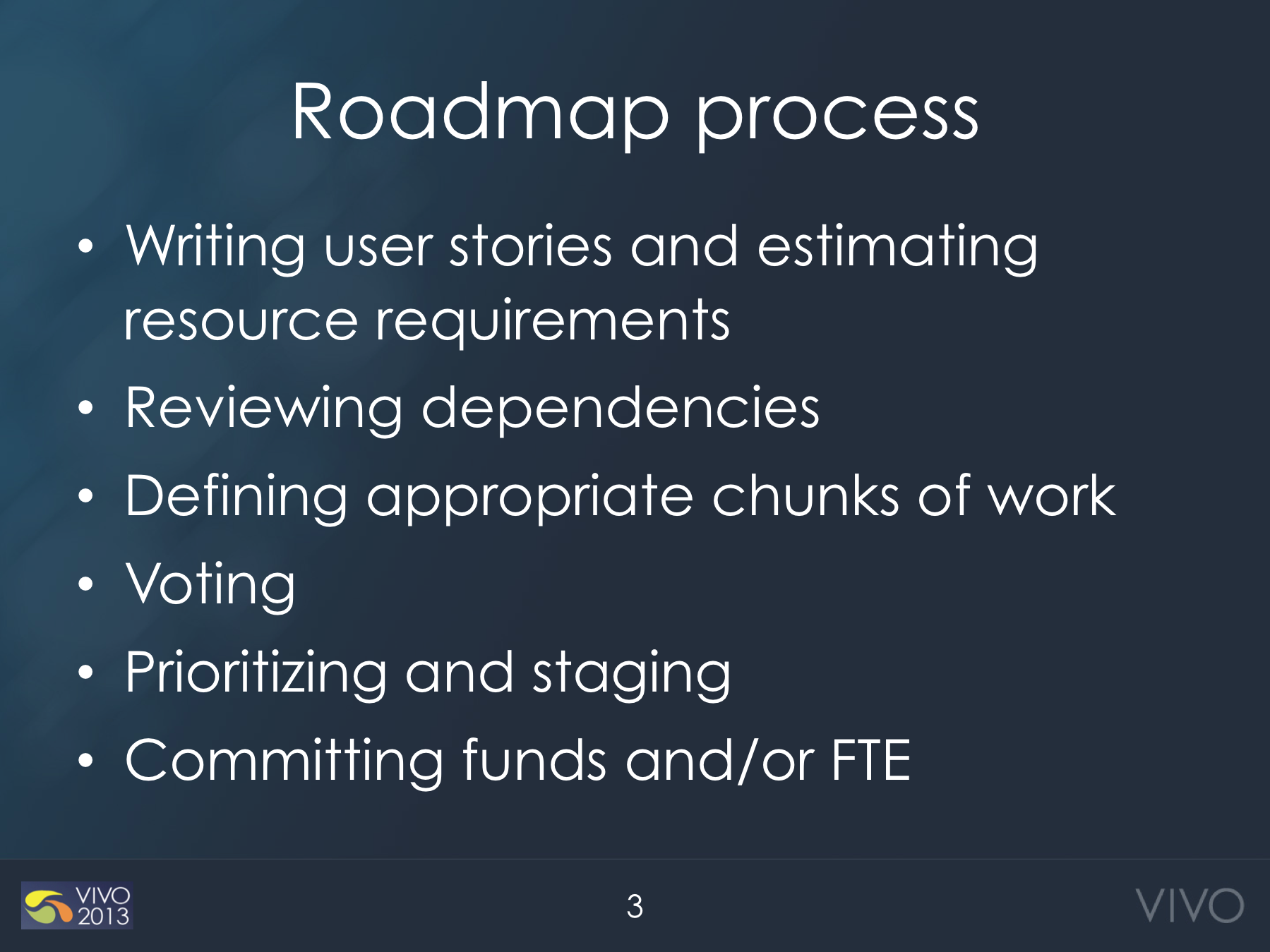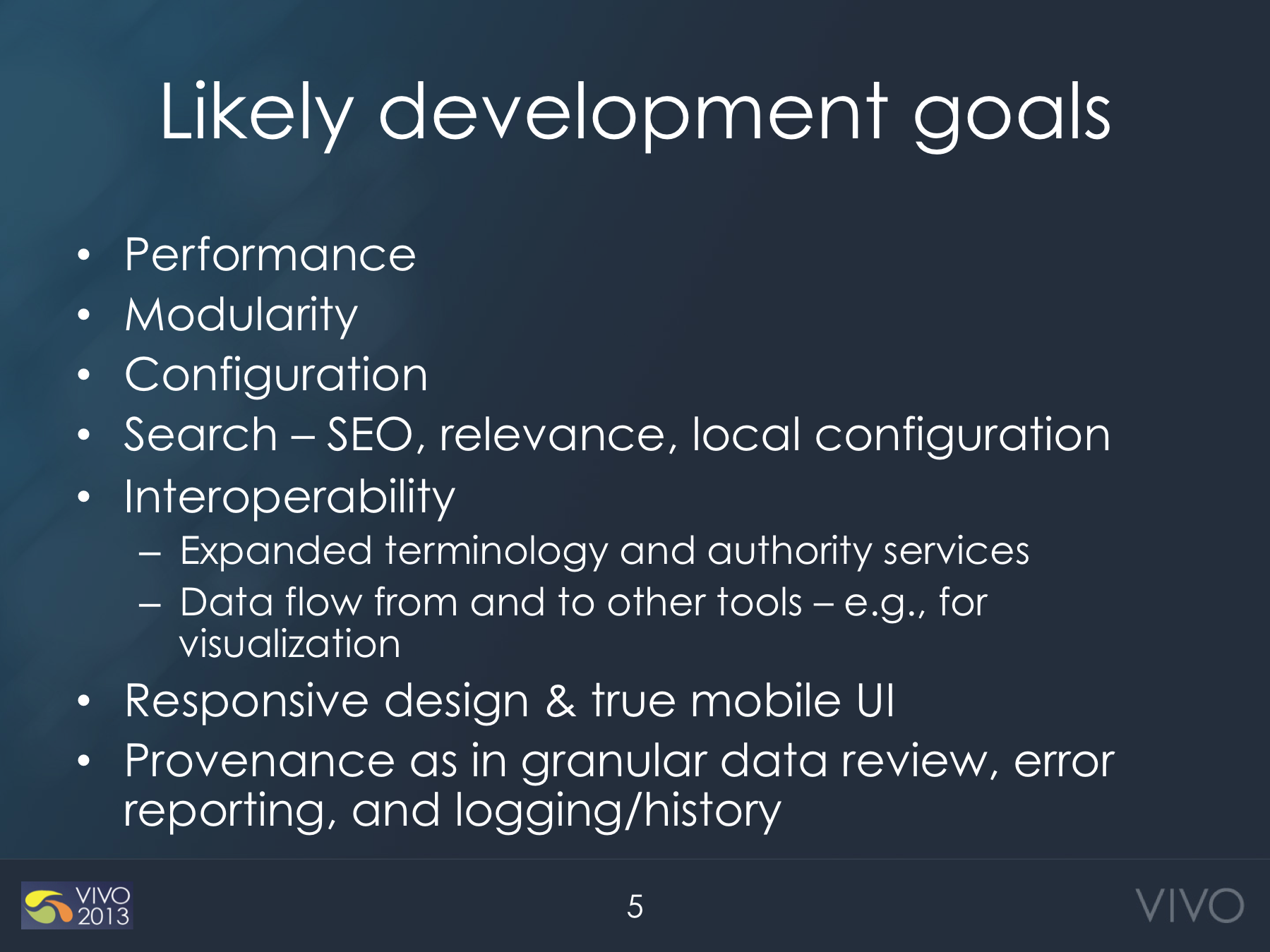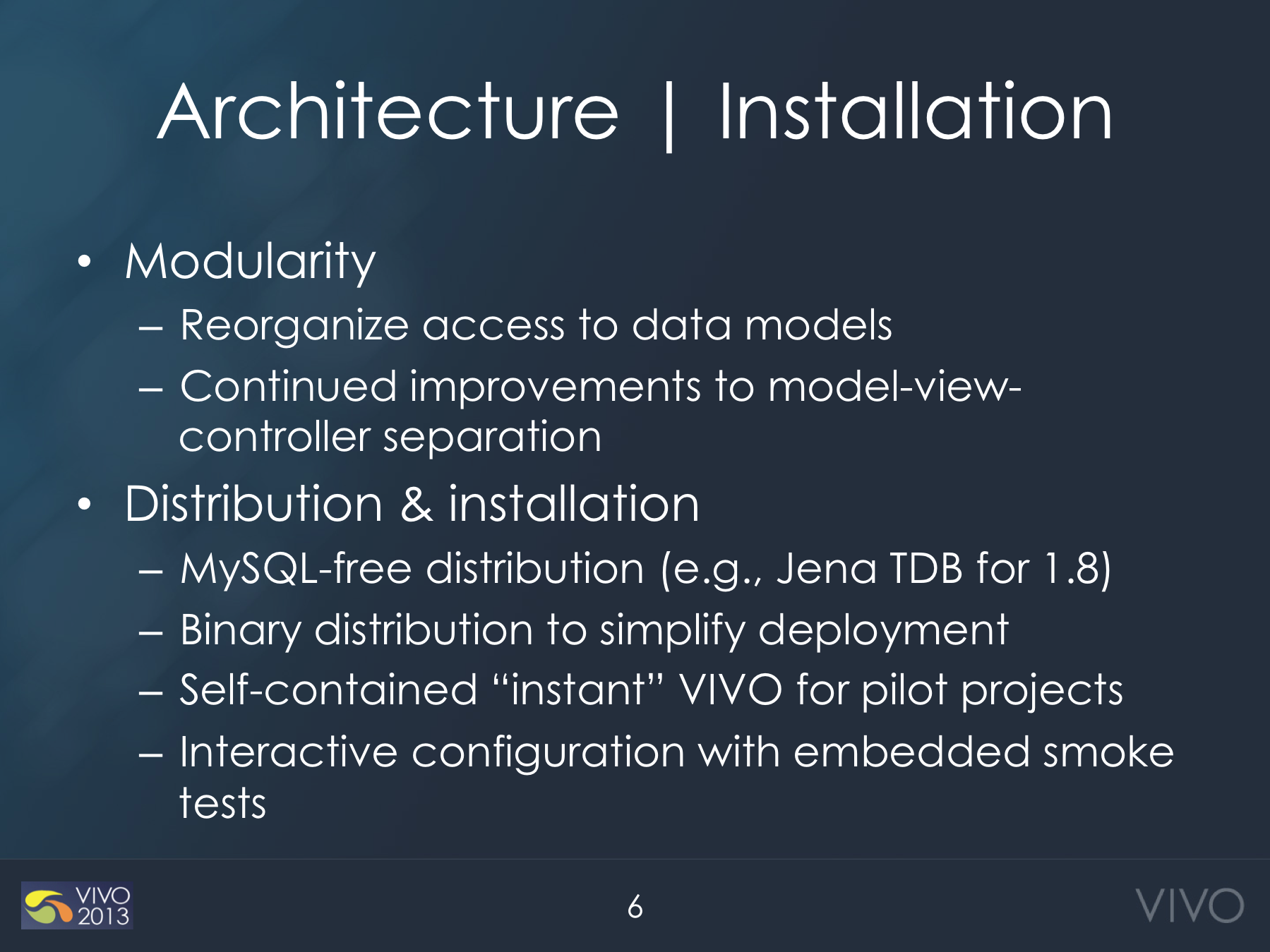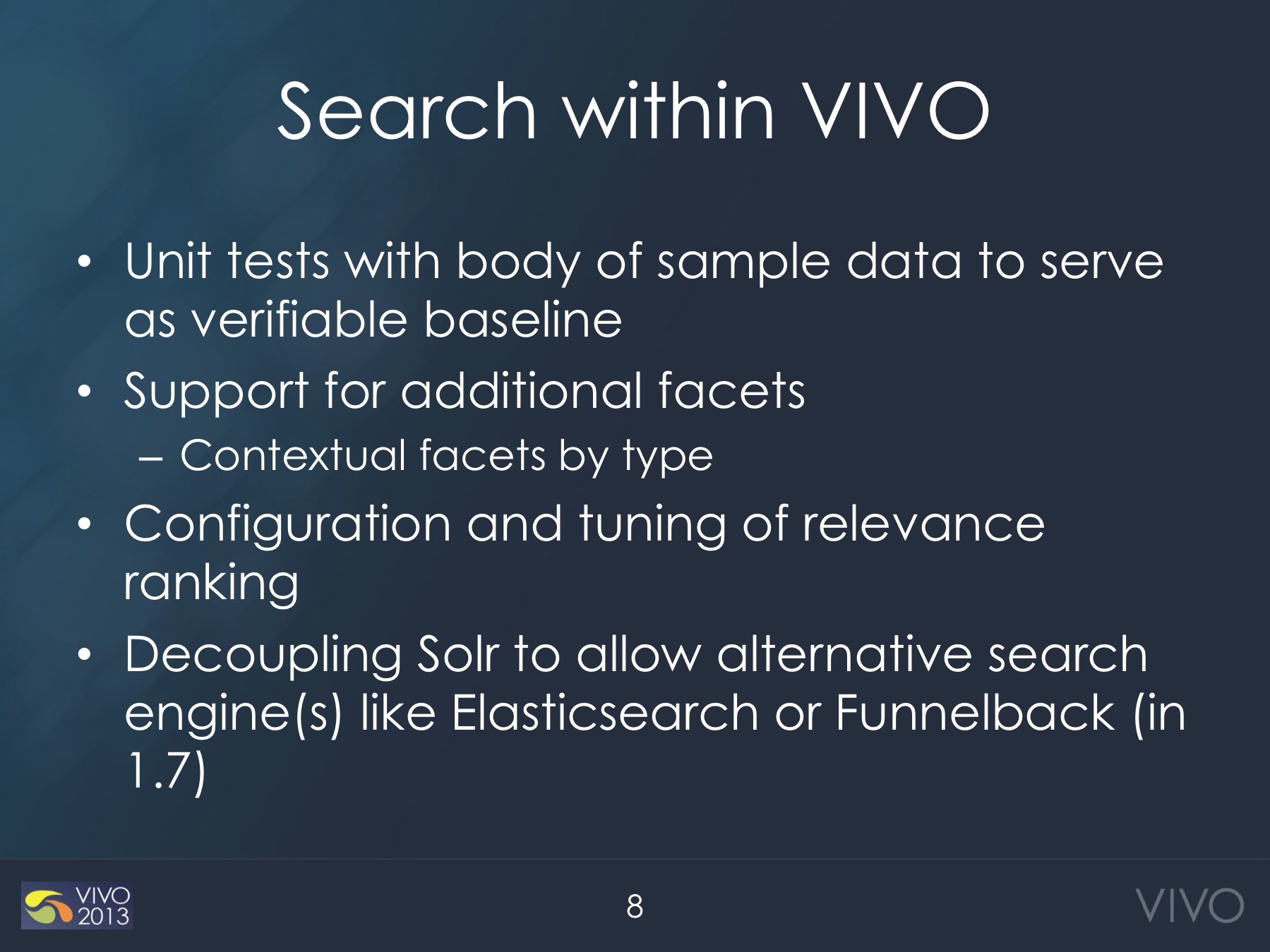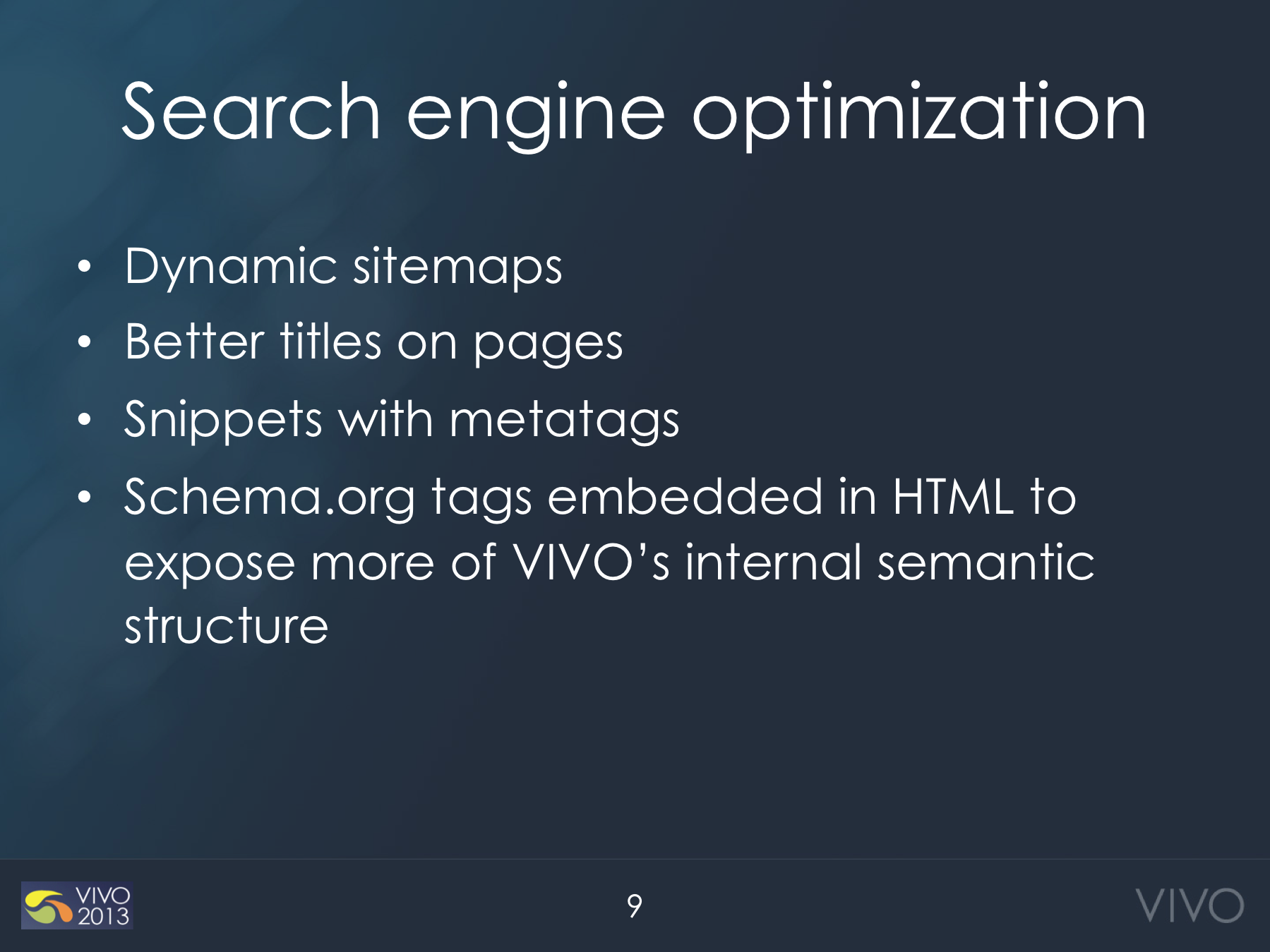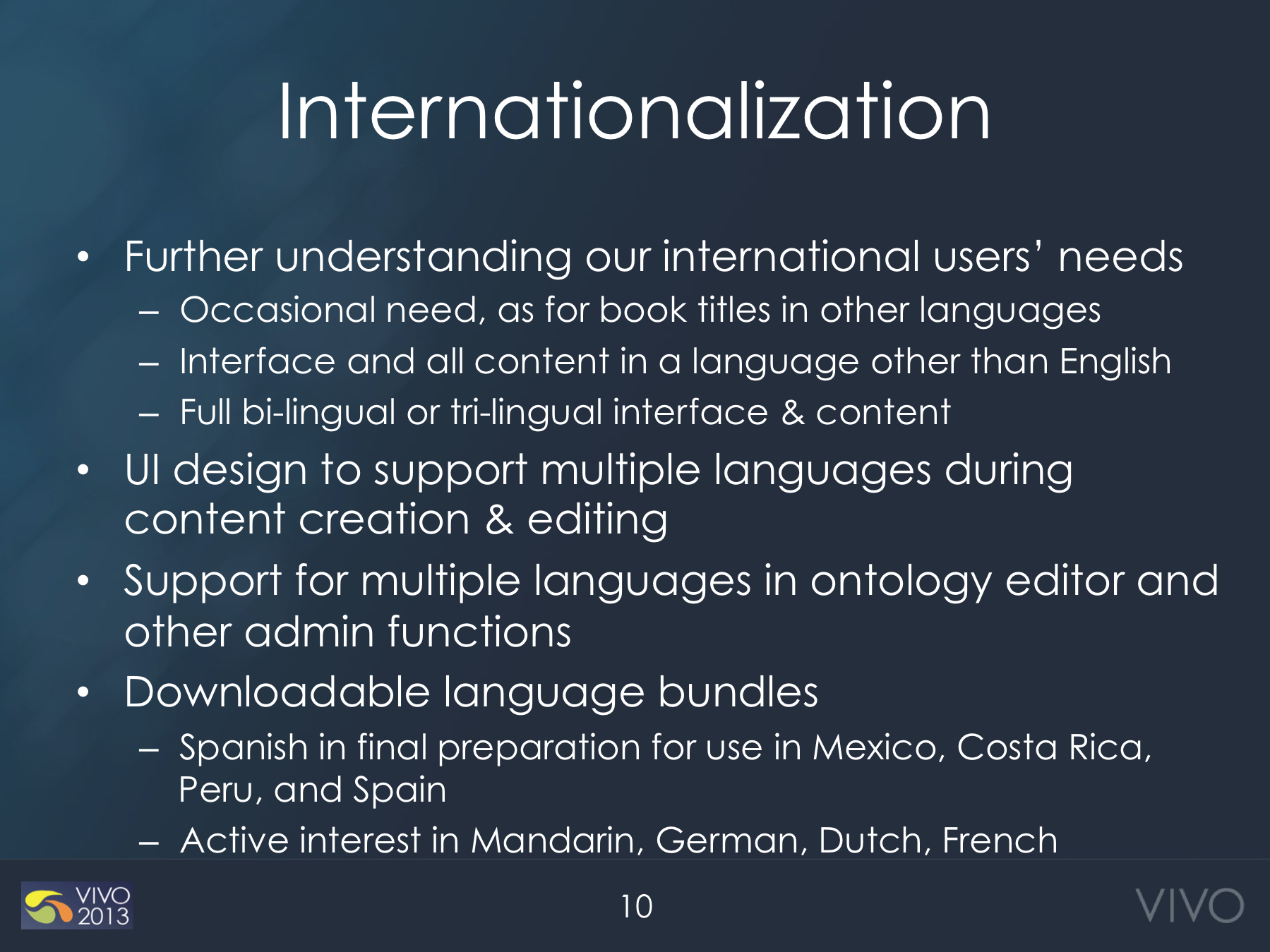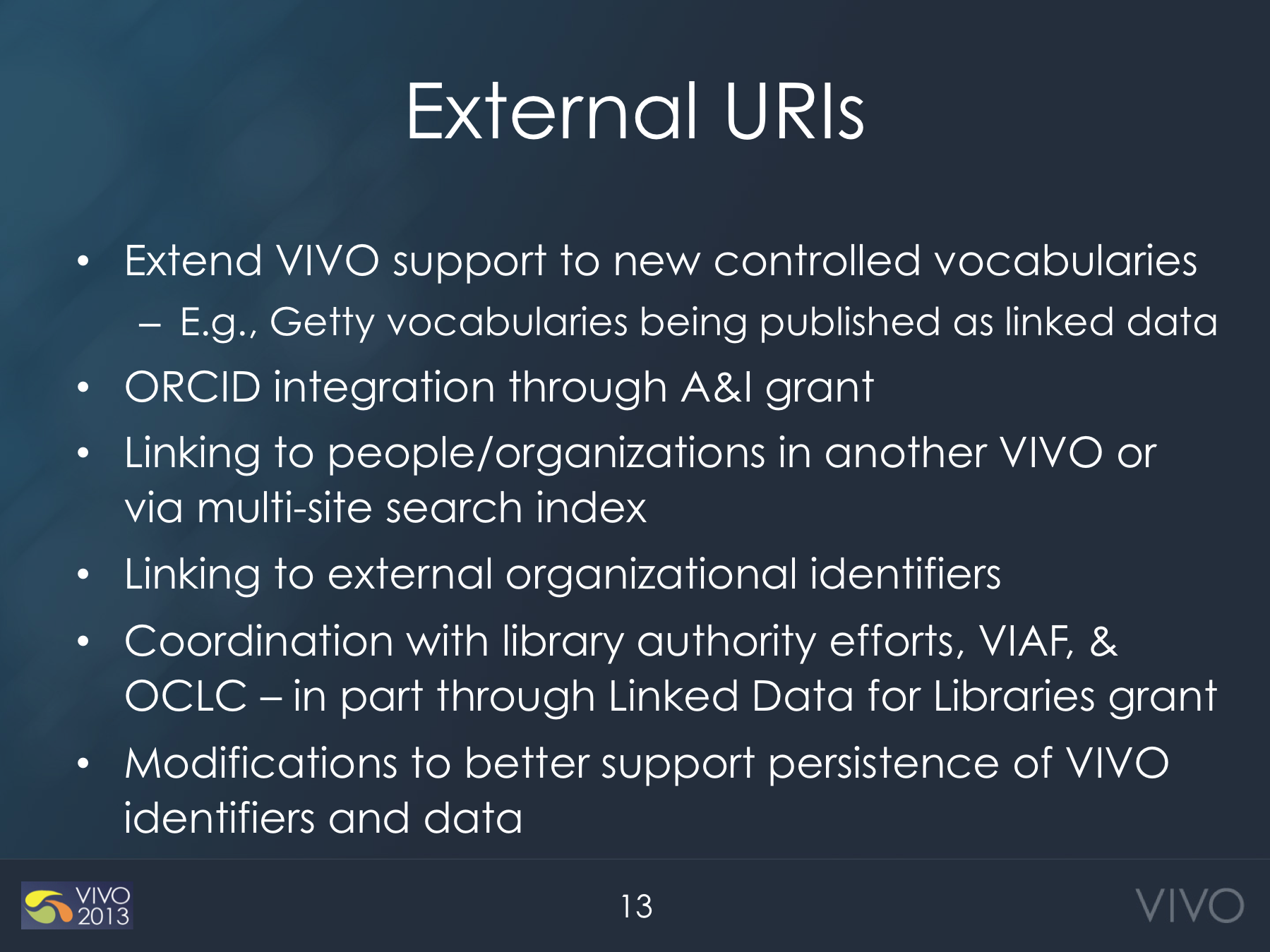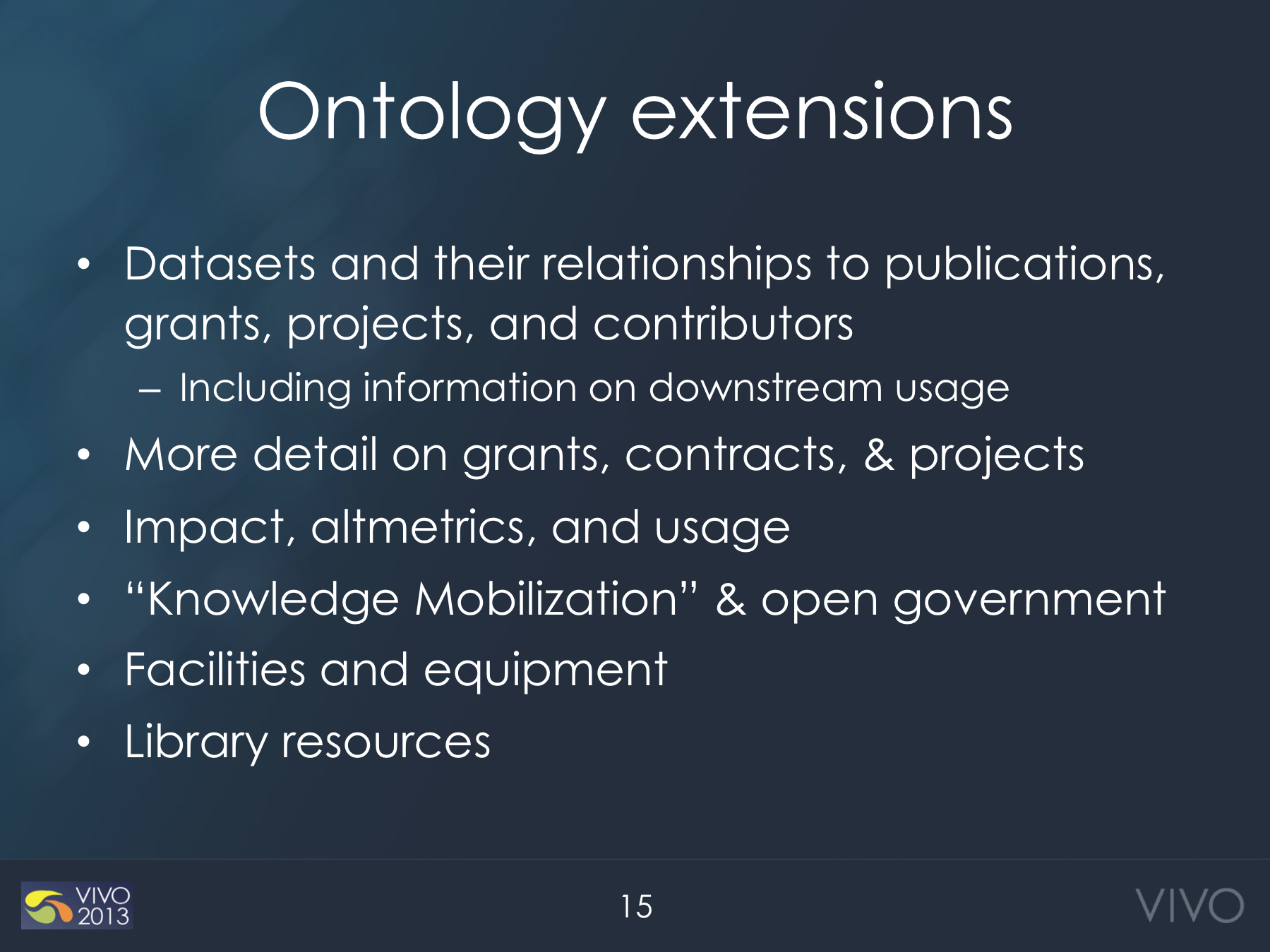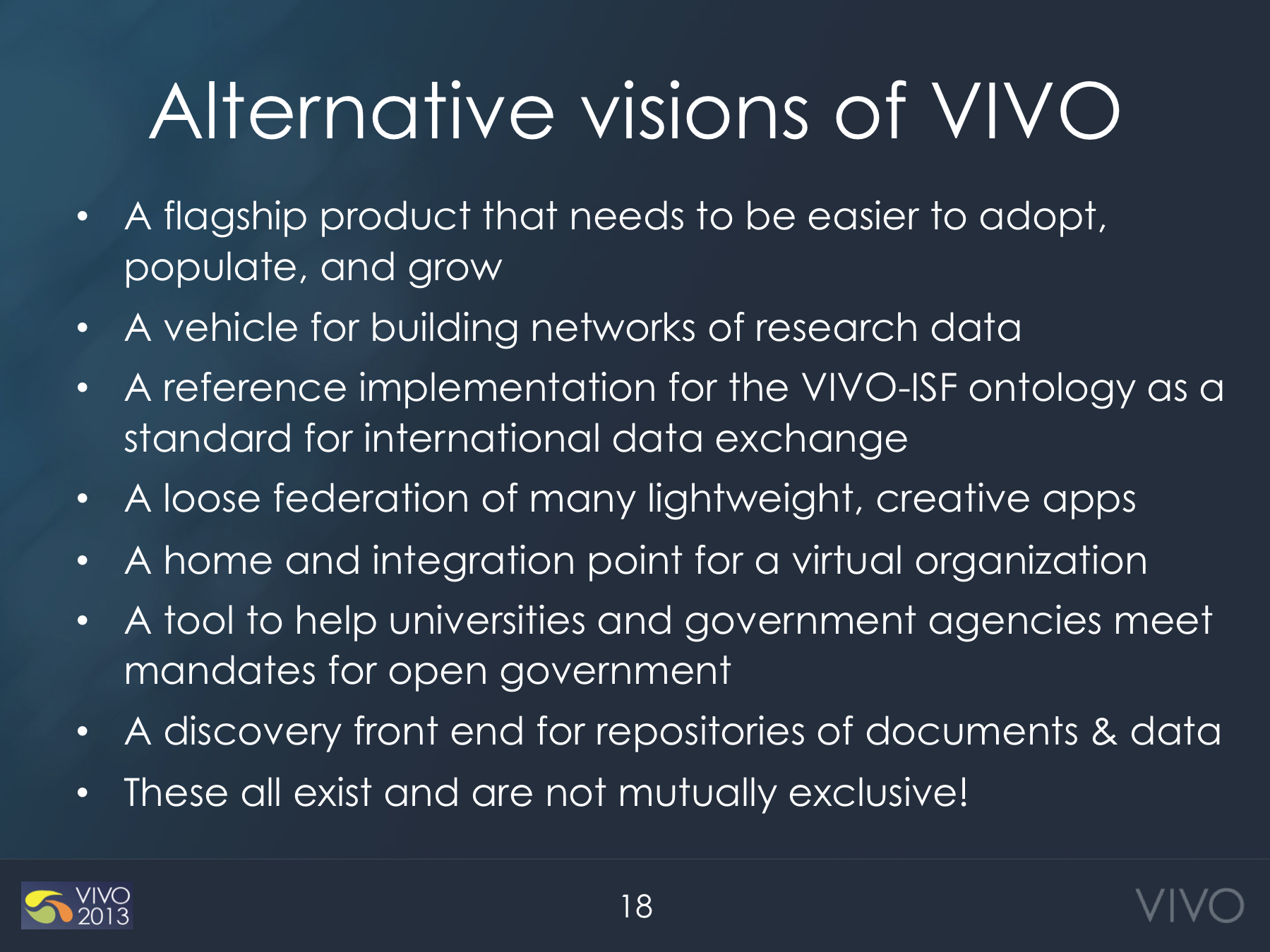The following presentation was given on the January 30, 2015 VIVO implementation and development call to help stimulate and scope a roadmap process for VIVO.
| Slide | Notes |
|---|---|
| To be successful, a roadmap process should lower the bar to contribution, not only in the process but for any aspect of the VIVO community. The VIVO community is a big tent welcoming participation by anyone interested in the VIVO software, the VIVO-ISF ontology, or more generally in the building networks of research and researchers in any domain. | |
| A roadmap process must start broad enough to encompass many activities and goals, and must be closely aligned with overall project and community strategy and goals. | |
| Here are some of the tasks that developing a roadmap will likely include | |
| A roadmap should respond to feedback from the field in order to address pain points in practice, not just new features. | |
| Each of the main headings here is broken out in more detail that follows. | |
| See also the VIVO/Vitro Architecture page and Software Architecture Overview. | |
| Performance and scalability are frequently recurring themes as VIVO projects assemble more data and support additional web traffic. | |
| VIVO's search indexer has improved performance and additional configuration options for VIVO v1.8. | |
| The UCSF Profiles team has put major efforts into SEO and significantly increased traffic to their site. VIVO can benefit from well-understood, fairly simple and straightforward improvements. | |
| VIVO internationalization helps build adoption outside the U.S. and can even support subtle regional differences in a single language. | |
| Data cleanup is a headache at almost all VIVO sites – and can be helped both by improvements to the VIVO software and the development/adoptions of other apps & tools. | |
| The library and linked data worlds are taking steps to assure the stability of identifiers for researchers, organizations, places, journals, subject areas, events, and other common shared types. Many VIVO instances focus on current awareness and remove researchers who have left the organization. What should our approach as a community be? | |
| These issues are closely related to each other. | |
| The VIVO-ISF ontology has a broader constituency by virtue of supporting the eagle-i application and Plumage as well as VIVO – and many concerns and common interests closely related to the VIVO application, versioning, and the process of making new releases of the software. | |
| Working together on ontology extensions will help to prevent diverging ontologies and data. | |
| The vivosearch.org prototype was developed in 2011 but has never evolved into the anticipated production-level service. How do we move this forward, both to connect all VIVOs but to address the needs of consortia such as the Southeastern Universities Research Association, the Mountain West Consortium, the Knowledge Mobilization community of Canadian universities, or 30 agricultural universities in China? | |
| A coordinated VIVO multi-site search effort faces many challenges but offers a key missing piece to connect individual VIVO efforts and connect researchers across software platforms. | |
| Finally, we all need to understand the diversity of the VIVO community – now and in the future. |
